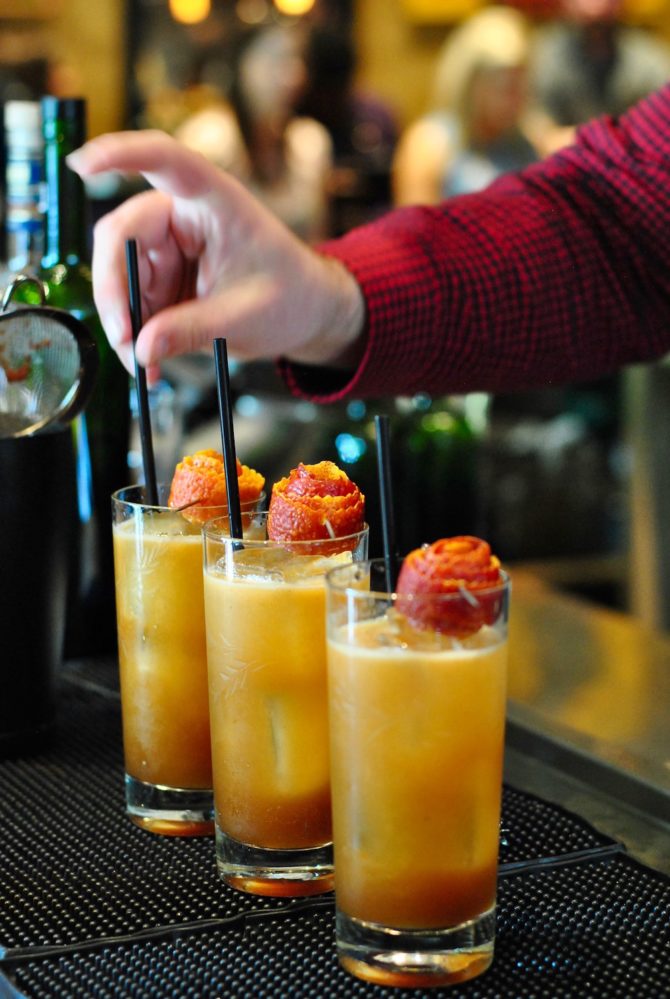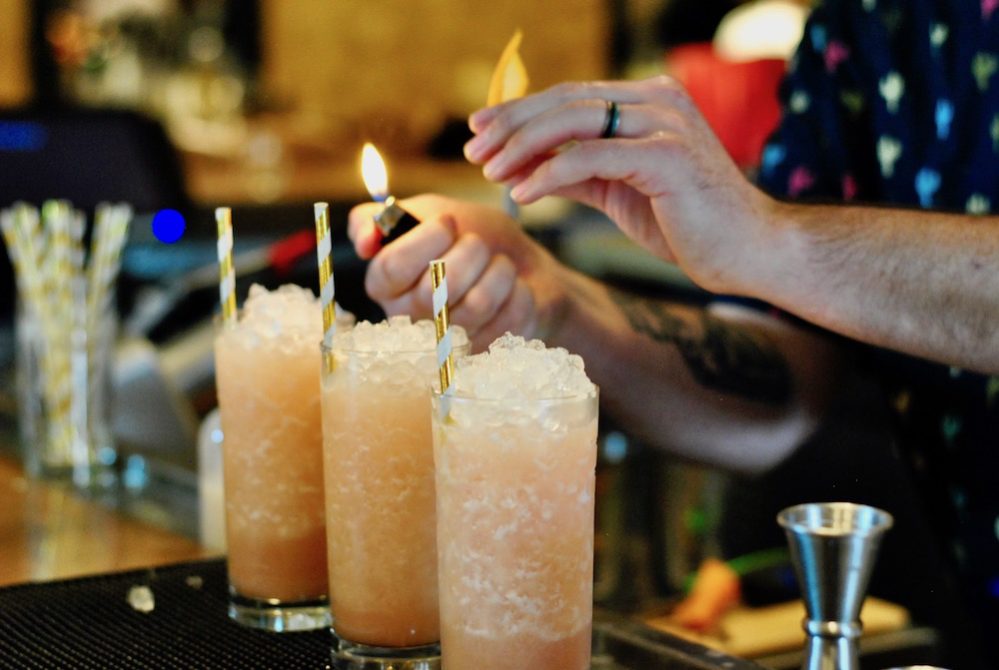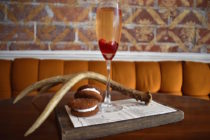Unless you’re regularly sipping on absinthe, you may believe that the spirit is illegal in the United States. It’s not. In fact, you can sip on dozens of tipples of the green muse at several Houston restaurants and bars. It’s been back on the beverage scene since 2007 but the misconceptions behind the spirit (that you’ll hallucinate while drinking absinthe, or that it is illegal) mean that the botanically-dense elixir is misunderstood.

Some contestants went all out with their garnish and presentation.
If you’re interested in absinthe, or a fan of black licorice, fennel, and star anise flavors, you might take note of a to-the-trade only cocktail competition that takes place across the country, called the Cocktail Classique (via USBG) which is sponsored by Lucid Absinthe. While you can’t enter the competition now, you may be interested in what the competitors at Monday’s regional semi-finals used in their submissions on Monday when the first round of competitors threw down their best absinthe-based cocktails. (I was invited to judge the competition, and while I openly admit that absinthe is one of my least-favorite spirits, I knew the competition would be strong and that I would be surprised at some of the entries.)

The Spanish Rake featured Lucid Absinthe, wild sweet orange tea, candied orange simple syrup, pineapple juice and candied orange peel as a garnish. Created by Christopher Lyttle
The drinks invented for this occasion might inspire you to dust off your own bottle of absinthe and play in your kitchen, or it might open up your mind to trying something new at your usual watering holes. Bartender Colby Poulin from Iguana Mexican Grill in Oklahoma City won the Fan Favorite award and took home a huge box Lucid Absinthe swag, and Houston bartender Rich Bailey of Johnny’s Gold Brick was the winner of the Houston semi-finals; Rich will go on to compete at the finals in New Orleans and if he wins there, he gets to work hands-on at the Lucid Absinthe-making facility at the Combier Distillery in Saumur, France.

Colby Poulin’s Fan Favorite cocktail, Maximilian The Last, incorporated Lucid Absinthe, mezcal, Fruitlab Hops Liqueur, homemade chamoy and tepache.
So what did judging entail? Well you might think that someone like myself who says I don’t like absinthe makes me a poor judge. But I’m actually a good representation of a few different categories of a consumer: I am not a bartending professional like my co-judge Patrick Abalos of Eighty Six’d Hospitality Group. While I’ve observed enough bartending to note what is considered bartending 101, I’m no bartender myself and don’t always pick up on the technique, so I’m better suited as a consumer judge. I also don’t drink absinthe regularly, unlike the other co-judge Ted Breaux who is a research scientist and master distiller of Lucid and Jade Absinthes. The three of us offer different takes, tastes and levels of interest in absinthe.

Richard Bailey’s Something Tiki took home the big win. Recipe below.
I’m also the worst kind of consumer that offers the greatest challenge to bartenders and chefs: I can seem like I think I know it all because of my experience as a food and beverage writer, but I also don’t like it all. It is easy to convert a fan into a bigger fan. With me judging, you had to convert a non-fan into a fan. It could be that I may have been the judgiest of the three judges, come to think of it.

Here is what we noticed while judging:
-
Rum and mezcal
- These two spirits are currently trending hard amongst cocktail enthusiasts and those who prefer to drink their spirits neat. Contestants exhibited their awareness by using these spirits in their cocktails which they entered in the cocktail classic. However, in some cases, the rum and mezcal fought to dominate the cocktails they created. With absinthe being such a spice-and-herb-forward product itself, a smokier mezcal argued for the limelight and a greener rum may have better-complimented absinthe. Not all mezcals are smokey, so a softer mezcal was a good fit.
-
Gin and green chartreuse
- Botanicals like botanicals, right? Gin and absinthe could go together very nicely, but I personally felt that chartreuse’s 130 herbs and fauna maybe was just overkill when paired with absinthe.
-
Keeping it French
- We weren’t surprised to see champagne used in a few of the cocktails or the use of St. Germaine since elderflower is softer and sweeter and contrasts nicely with the woody-sweetness and anis found in absinthe. None of us were excited by these practiced partnerships.
- Less waste: huge props to the contestants who used conservative practices like paper straws and cloth napkins and stone coasters. And, to those who used whole ingredients multiple times. In the Spanish Rake, orange peels were used to make syrup, then those peels were candied and utilized as a garnish. We’re still tracking the trash tiki movement and several contestants mentioned using conservative methods in cocktail development.
- By nature, absinthe is generally either a cheery green-yellow or a more of a cloudy white in a wonderful, dream-like way. Colors like pink, yellow, lavender and light green look nice mixed with this cloudiness but eggwhites and bubbly sort of gave it a dirty dishwater appearance. This was a tough competition and such a fun contest to judge. Thanks to all the bartenders who braved the bar and threw down for us (the judges) and their colleagues.
Something Tiki Richard Bailey of Johnny’s Gold Brick
1 oz Lucid Absinthe
¾ oz fresh lemon juice
¾ oz cinnamon syrup
½ oz Laird’s Apple Brandy
¼ oz Aperol
¼ oz Velvet Falernum
mint and star anise for garnish
Method: In a shaker, mix all ingredients well. Prepare a pilsner glass or Collins glass by filling to top with crushed ice. Pour from shaker into glass, grate star anise atop ice and add slapped mint as garnish.







Follow Us